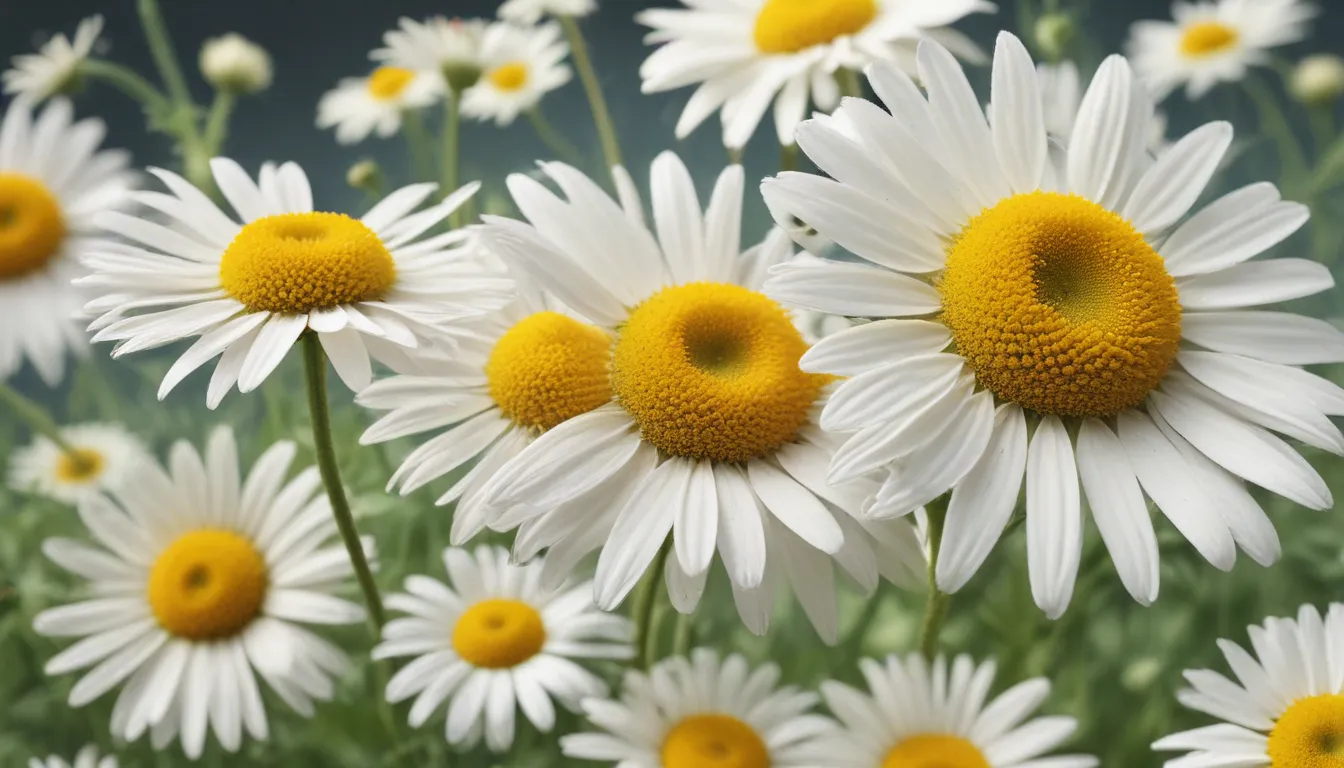The pictures in our articles might not always show exactly what the text is talking about. We use these images to make the article more interesting and eye-catching. They are there to add to the text, but not to replace it or show every detail.
Camomile, also known as chamomile, is a beloved herb with a rich history and a multitude of fascinating facts. This delicate flower, belonging to the daisy family, has been cherished for centuries for its calming and soothing effects. From ancient origins to modern-day applications, camomile continues to captivate people worldwide. Join us as we delve into 16 intriguing facts about camomile, showcasing its diverse uses and enchanting properties. So, grab a cup of camomile tea and let's explore the wonderful world of this remarkable herb!
Discovering Camomile: A Closer Look at Its Origins and Species
- Camomile's Origins: The name camomile is derived from the Greek word "khamaim?lon," meaning "earth apple," alluding to the pleasant apple-like aroma of the flowers.
- A Member of the Daisy Family: Camomile belongs to the Asteraceae family and is recognized for its daisy-like flowers with white petals and yellow centers.
- Two Main Species: The two main types of camomile are German camomile (Matricaria chamomilla) and Roman camomile (Chamaemelum nobile).
The Medicinal Marvel: Exploring Camomile’s Health Benefits and Uses
- Centuries-Old Medicinal Uses: Camomile has a long history of medicinal use, known for its ability to soothe digestive issues, promote relaxation, and aid in sleep.
- Herbal Tea Elixir: The dried flowers of camomile are commonly used to make herbal tea, celebrated for its calming and soothing effects.
- Anti-Inflammatory Ally: Camomile possesses anti-inflammatory properties, offering relief for conditions like skin irritations and allergies.
- Natural Remedy for Menstrual Cramps: Its soothing properties make camomile a popular choice for alleviating menstrual cramps and discomfort.
Camomile Beyond Tea: Unveiling its Beauty and Culinary Uses
- Natural Hair Lightener: Camomile can be used as a natural hair lightener, gently lightening hair color over time.
- Safe and Well-Tolerated: Camomile is generally safe for most people and has minimal side effects when consumed in moderation.
- Antioxidant-Rich: Camomile contains antioxidants that play a vital role in protecting the body against oxidative stress and damage.
Camomile in Everyday Life: From Skincare to Traditional Medicine
- Anti-Anxiety Aid: Camomile is believed to have anti-anxiety effects, promoting relaxation and reducing feelings of anxiety.
- Skincare Superstar: Camomile is a common ingredient in skincare products due to its soothing and anti-inflammatory properties.
- Natural Dye Option: The flowers of camomile can be used as a natural dye, producing a pale yellow color for fabrics and yarns.
Embracing the Global Appeal: Camomile’s Presence Around the World
- Native to Europe and Asia: Camomile is native to Europe and Western Asia but is now cultivated in various regions, including North America.
- Traditional Medicine Treasure: Camomile is a popular ingredient in traditional herbal remedies, used for ailments like colds, stomachaches, and insomnia.
- Garden Guardian: Camomile attracts beneficial insects like bees and butterflies, contributing to a healthy ecosystem.
Conclusion: The Enduring Charm of Camomile
In conclusion, camomile stands as a remarkable herb with a legacy of providing numerous health benefits and soothing properties. From relieving anxiety to promoting sleep and aiding digestion, camomile offers a diverse range of advantages for overall well-being. Whether enjoyed as a comforting cup of tea or incorporated into skincare routines, camomile remains a timeless gem in the realm of herbal medicine.
FAQs: Your Guide to Everything Camomile
-
What is camomile?
Camomile, also spelled chamomile, is a daisy-like flowering plant known for its medicinal properties and calming effects. -
What are the health benefits of camomile?
Camomile boasts various health benefits, including reducing inflammation, promoting sleep, relieving anxiety, aiding digestion, and soothing skin irritations. -
How is camomile typically consumed?
Camomile is commonly consumed as a tea or infusion, with the dried flowers steeped in hot water to create a fragrant beverage. -
Is camomile safe to consume?
Camomile is generally considered safe, but individuals with allergies should exercise caution. Consulting a healthcare professional is advised before use. -
Can camomile be used topically?
Yes, camomile can be applied topically to soothe skin irritations, but a patch test is recommended to check for allergies. -
Can pregnant women consume camomile?
Pregnant women should seek advice from a healthcare provider before consuming camomile due to potential effects on pregnancy.
Embark on a journey of self-care and exploration with the enchanting world of camomile. From its ancient origins to modern-day applications, camomile continues to weave its soothing spell on those seeking natural remedies and holistic wellness. Dive into the realm of herbal treasures and uncover the timeless allure of this beloved herb. Let camomile be your companion in the pursuit of well-being and tranquility.






